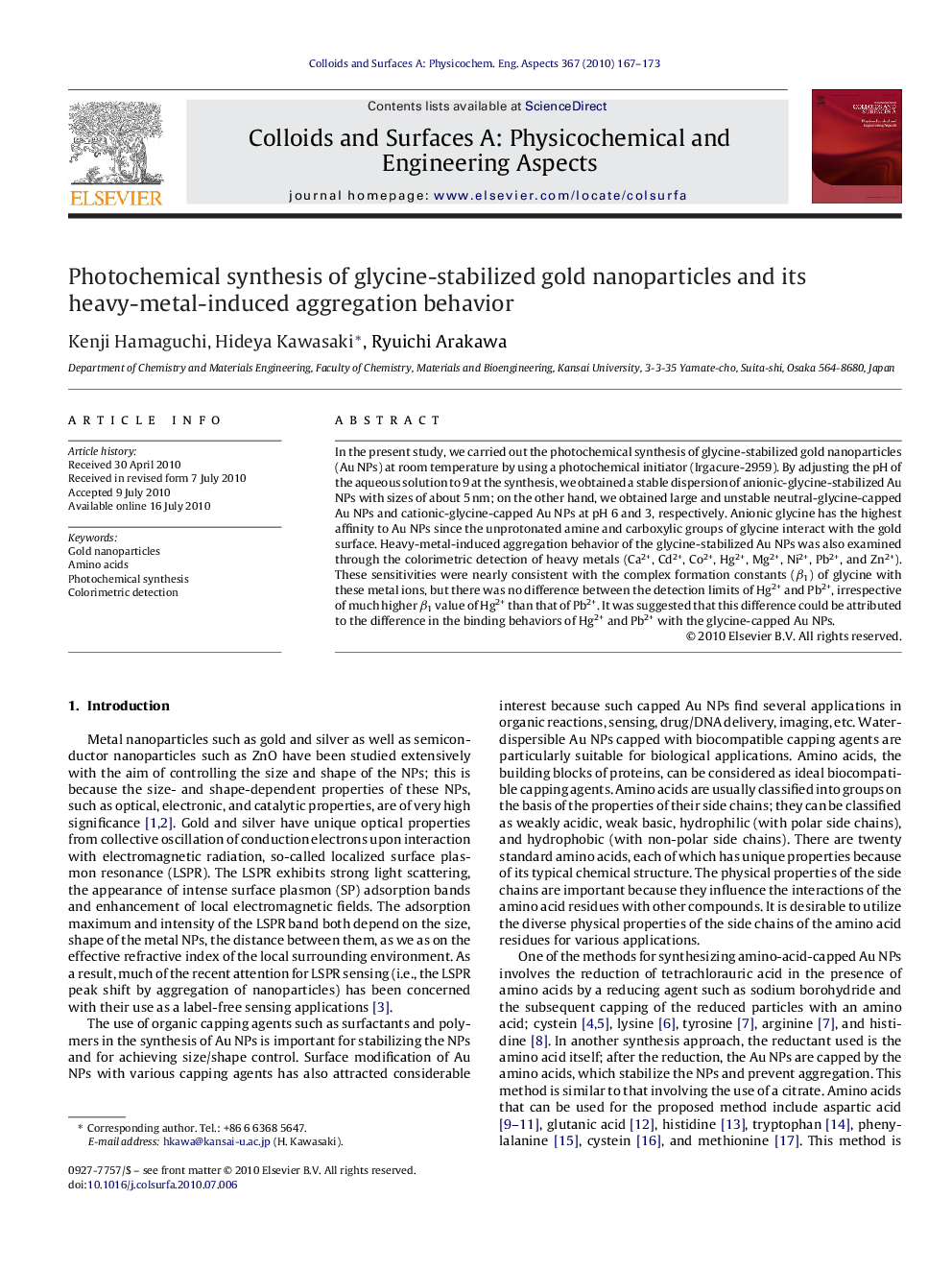| Article ID | Journal | Published Year | Pages | File Type |
|---|---|---|---|---|
| 595169 | Colloids and Surfaces A: Physicochemical and Engineering Aspects | 2010 | 7 Pages |
In the present study, we carried out the photochemical synthesis of glycine-stabilized gold nanoparticles (Au NPs) at room temperature by using a photochemical initiator (Irgacure-2959). By adjusting the pH of the aqueous solution to 9 at the synthesis, we obtained a stable dispersion of anionic-glycine-stabilized Au NPs with sizes of about 5 nm; on the other hand, we obtained large and unstable neutral-glycine-capped Au NPs and cationic-glycine-capped Au NPs at pH 6 and 3, respectively. Anionic glycine has the highest affinity to Au NPs since the unprotonated amine and carboxylic groups of glycine interact with the gold surface. Heavy-metal-induced aggregation behavior of the glycine-stabilized Au NPs was also examined through the colorimetric detection of heavy metals (Ca2+, Cd2+, Co2+, Hg2+, Mg2+, Ni2+, Pb2+, and Zn2+). These sensitivities were nearly consistent with the complex formation constants (β1) of glycine with these metal ions, but there was no difference between the detection limits of Hg2+ and Pb2+, irrespective of much higher β1 value of Hg2+ than that of Pb2+. It was suggested that this difference could be attributed to the difference in the binding behaviors of Hg2+ and Pb2+ with the glycine-capped Au NPs.
